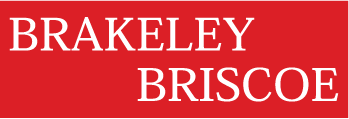Conducting a Campaign Feasibility Study
Alden F. Briscoe, MAT
When a client asks us to conduct a feasibility/planning study for a capital campaign, they want us to answer two questions:
- Assuming there are donors willing to give money to achieve the goals of their campaign, what does the institution need to do to prepare internally for the campaign? This includes changes or upgrades to the foundation or fundraising staff, top management, and the board(s) as well as systems, processes, and procedures. It may also include recommendations for what the medical and administrative staff can do to help fundraising.
- Where is the money for this campaign, how much is there, and how do we structure the cultivations and asks to get it?
For the “internal phase” we begin by learning as much as we can about the hospital or system and the foundation. We review your vision, mission, bylaws, recent board minutes, reports from the database on donors and potential donors, grant proposals, fundraising request letters and emails, and telephone calling scripts. We look at your use of social media including website, and we also interview key fundraising staff and board members involved in fundraising.
We look at your knowledge and use of your fundraising software as well as any wealth screening, prospect research, and analytics capabilities you have. And we learn what we can from any previous campaigns by examining documents or reports and talking to any staff who were involved and any available prior campaign leadership.
We analyze and predict which of your needs are most likely to elicit philanthropic interest from your potential donors. Then we help you develop a preliminary case for support for the campaign. We give you samples of effective case statements, and provide editing and graphic suggestions to help you craft the most persuasive case possible.
For the “external phase” we determine where the money exists and why and how potential donors may wish to invest in the goals of the campaign. We do this through confidential, personal interviews with individuals, corporations, and foundations who/which may be expected to invest or influence others to invest in your campaign. Interviewee candidate selection is a joint effort between Brakeley Briscoe and you.
We suggest categories of potential donors: grateful patients, families, friends, foundations, vendors, and medical and administrative staff, and we work with you and the Steering Committee (see below) to help you select them.
During the interview meeting—and we strongly recommend doing interviews face to face—we probe a number of issues with open- ended questions:
- What is the interviewee’s relationship with the hospital, system, or foundation?
- What is the image of the hospital, system, or foundation?
- Are the needs you have defined important to the interviewee?
- Is the preliminary case compelling and how can it be improved?
- Can the interviewee identify additional potential donors?
- Does the institution have the capacity to conduct the campaign?
- Is willing, capable, and right volunteer leadership available and what is the best way to attract it?
- Does the interviewee see a campaign role for him or her-self?
- Are there hidden concerns which will impact the campaign’s success?
- Are there other campaigns which may compete with your campaign?
- And will the interviewee him or herself be a campaign donor and at what level?
During the course of the study we maintain close contact with the client. We schedule bi-weekly check-in calls or meetings to keep everyone up to date on progress and uncover issues before they become problems. We also recommend creating a small Steering Committee of key people from the client. This committee helps us adapt our methodology to local realities and provides us feedback on the local culture.
The Steering Committee also reviews and approves the case for support, helps select the study’s external interviewees, reviews and approves our draft report, and—with our help—presents the report to the board. This process helps assure buy-in of the campaign plan.
Once we have completed the internal assessment and the external interviews, our team of consultants—and we always use a team—meets to review our findings and agree on conclusions and recommendations. Then one of our team members writes the report with editorial help from the rest of the team.
Our report includes findings, conclusions, recommendations, a stretch goal, and a plan for how to conduct the campaign with budget, timeline, staffing pattern, and volunteer structure. (A separate document contains a list of donors we have uncovered along with possible leadership candidates.) We review the plan with the Steering Committee, and then help the Steering Committee present/sell this plan to the board and any other group which may be influential for launching the campaign.
Then we are available to help our client implement the plan.
